The Box and Goodies -
The Asus P8H67-I Deluxe comes in a fairly small box. This is not unexpected as the Mini-ITX form factor is not big and really does not require a lot of space. The front of the box makes it very clear that this line of products is aimed at entertainment. There are some icons near the bottom that also show off some of the extra features that you get with the P8H67-I Deluxe.
The back of the box offers a specification sheet along with a picture of the board. One item of note here is the GPU Boost that is listed on the back of the box. If you are familiar with Asus’ CPU Level up then this will be very familiar to you. It is essentially the same type of technology but aimed at the built in GPU on the Sandy Bridge CPU. Added to this nice feature is a real front USB 3.0 header. However, now is not the time to talk about all of the features of the P8H67-I. 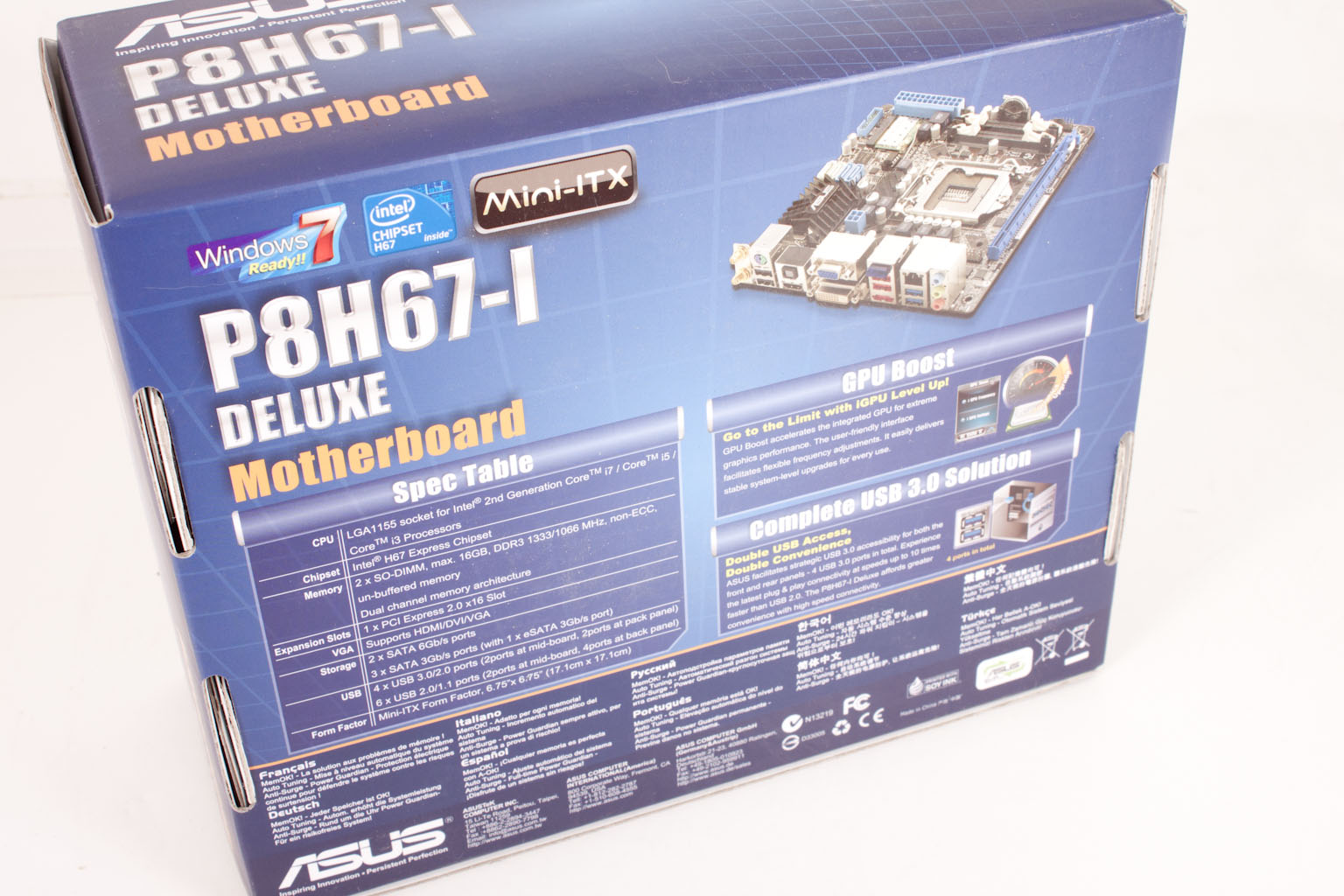
Asus has put in a decent haul of goodies in the box; you get everything you need to get going. One thing I do wish they would put in with this series is the padded I/O Shield. Asus calls this Q-Shield and it would be very welcome especially considering the small and cramped cases you usually work in this this sized board. You also get a pair of Wireless antennas for the MIMO enabled n-Spec Wireless card that is connected via a micro PCIe slot on the board (more on that later too).
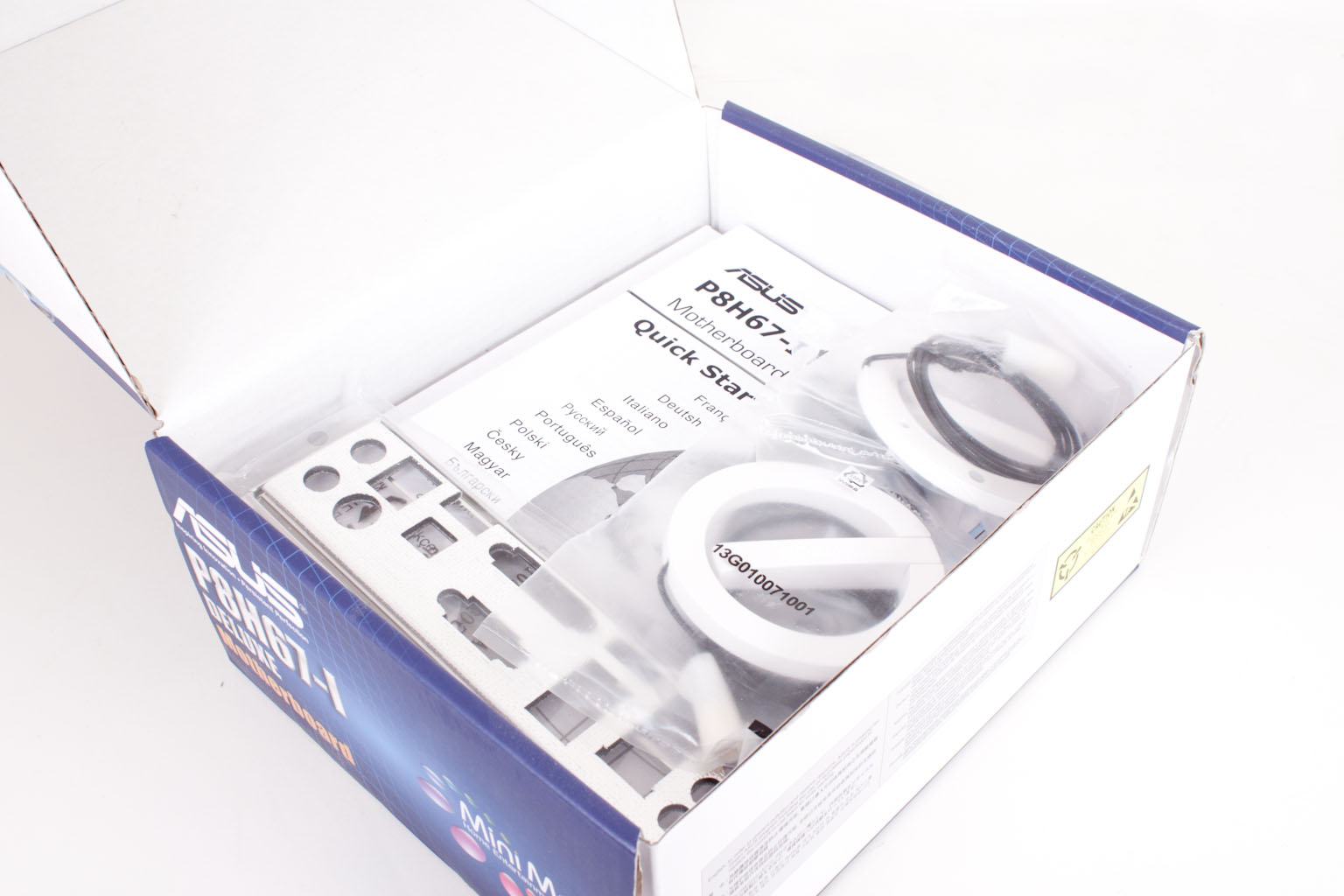 |
 |
In all it is not a bad package and certainly one that will attract someone looking to build a solid HTPC. Now we will see how the Asus mindset approached the layout and design of the actual board.
The Layout -
The layout of any motherboard is important. Even simple mistakes in component placement or the signal traces can cause major issued in performance and stability. With the ATX form factor we find that this is even truer; the devices we drop onto them demand more and cleaner power while the signal speeds push faster and faster. As we mentioned (and it says on the box) the Asus P8H67-I Deluxe is a Mini-ITX motherboard. This means that it is only 6.75 inches square. This small size can make for difficulties in trace tuning and component layout. To help relieve some of the design complexity Asus has opted to use SO-DIMM slots instead of the full-sized 240-pin slots found on other boards. 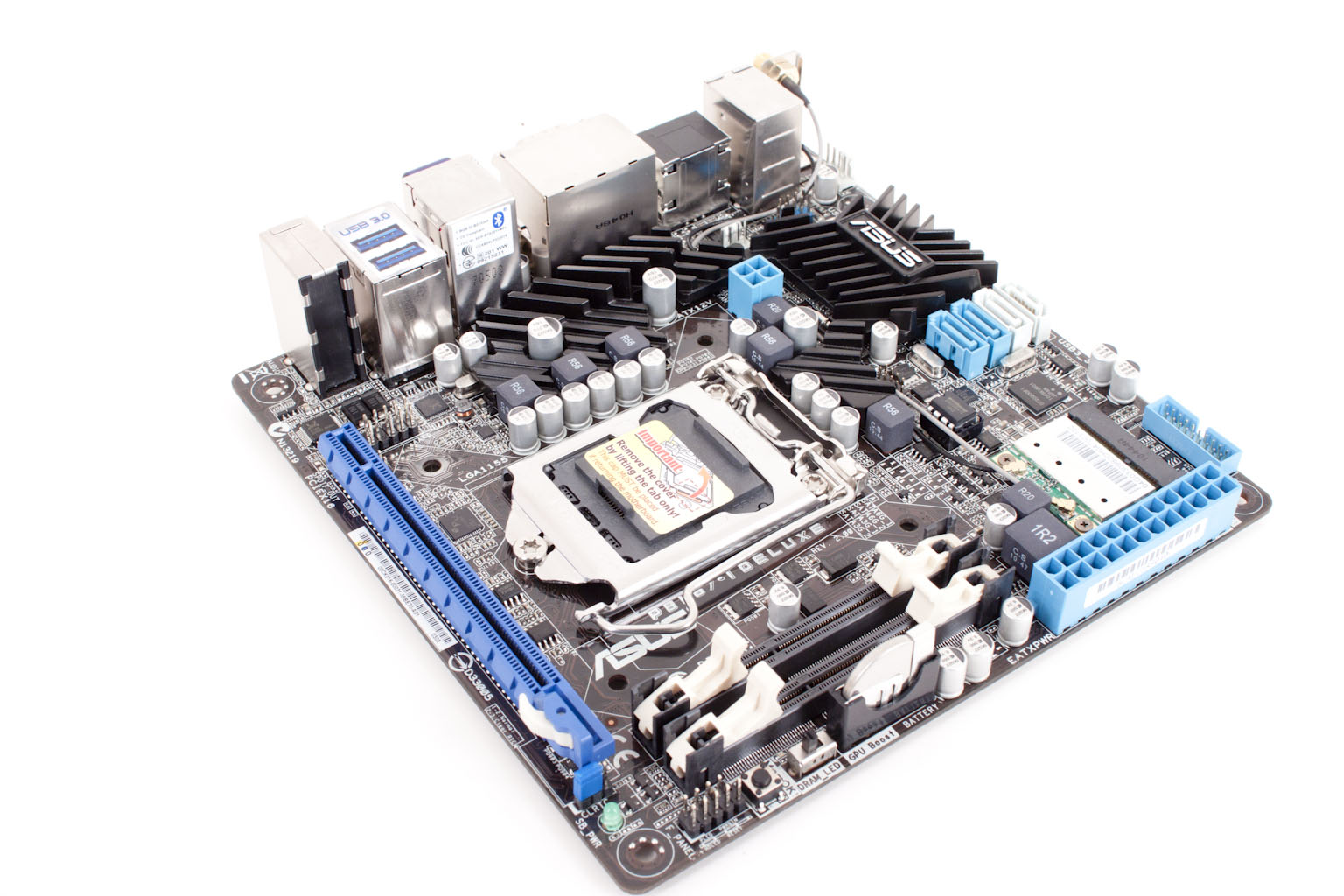
The Mini-ITX layout throws our normal walk around out the window, but we will start off around the 24-Pin ATX power connector and work our way around from there. As you might expect the P8H67-I Deluxe is a cramped and somewhat chaotic board. Even up by the power connector we find very little open space on the board. We do find the add-in Wireless Network card and the USB 3.0 header up here though. Not too far from these we find the four SATA ports (2 are SATA II and Two are SATA 3.0). Interestingly Asus has opted for a very solid heatsink design that covers not only the H67 chipset but also most of the power regulation on the board. In the middle of this is a single 4-pin aux power connector to help keep power to the board.
 |
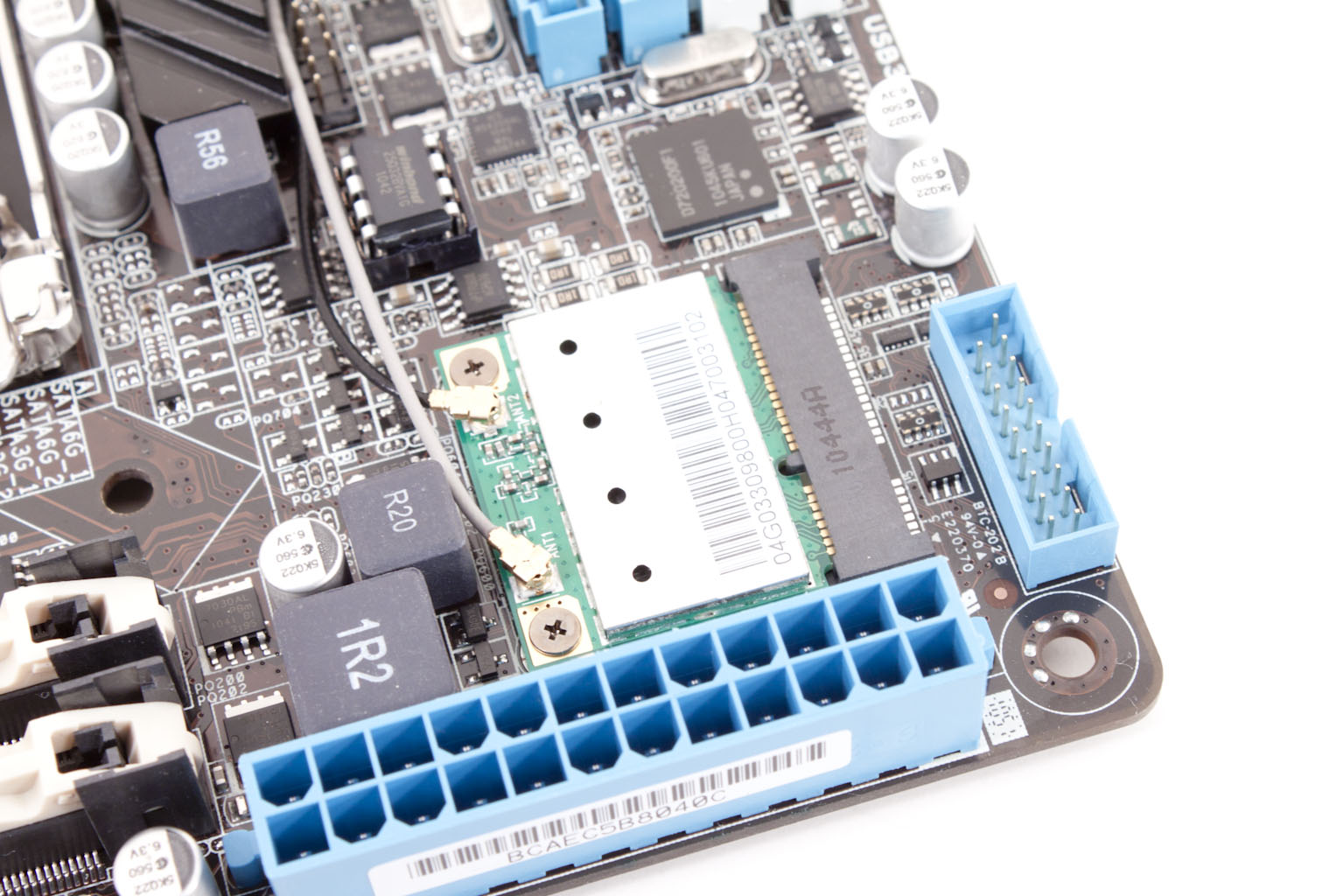 |
Moving just a little bit we find the CPU socket and RAM slots. The CPU area is not that clear so you will need to be selective in your choice of cooler. Almost any of the stock Intel coolers will work but the larger the cooler the greater chance you have of blocking the single PCIe x16 port on the board. Also visible in this shot is the switch for the GPU Boost. This little switch enables of disables the GPU Boost feature (which is an internal overclock of the GPU on the Intel CPU). A feature that is becoming a standard item is the MemOK! button. This allows you to quick setup the most compatible timings for the memory you have installed. As you look at this picture you can see what I am talking about when I mention trace tuning. With the Mini-ITX form factor there is very little room to extend traces or to curve them for best effect. Added to this is the limited “open” space on the board which makes finding places for posts even more difficult (a post is a tube or hole through the layers of the board that allow traces to connect to different layers).
 |
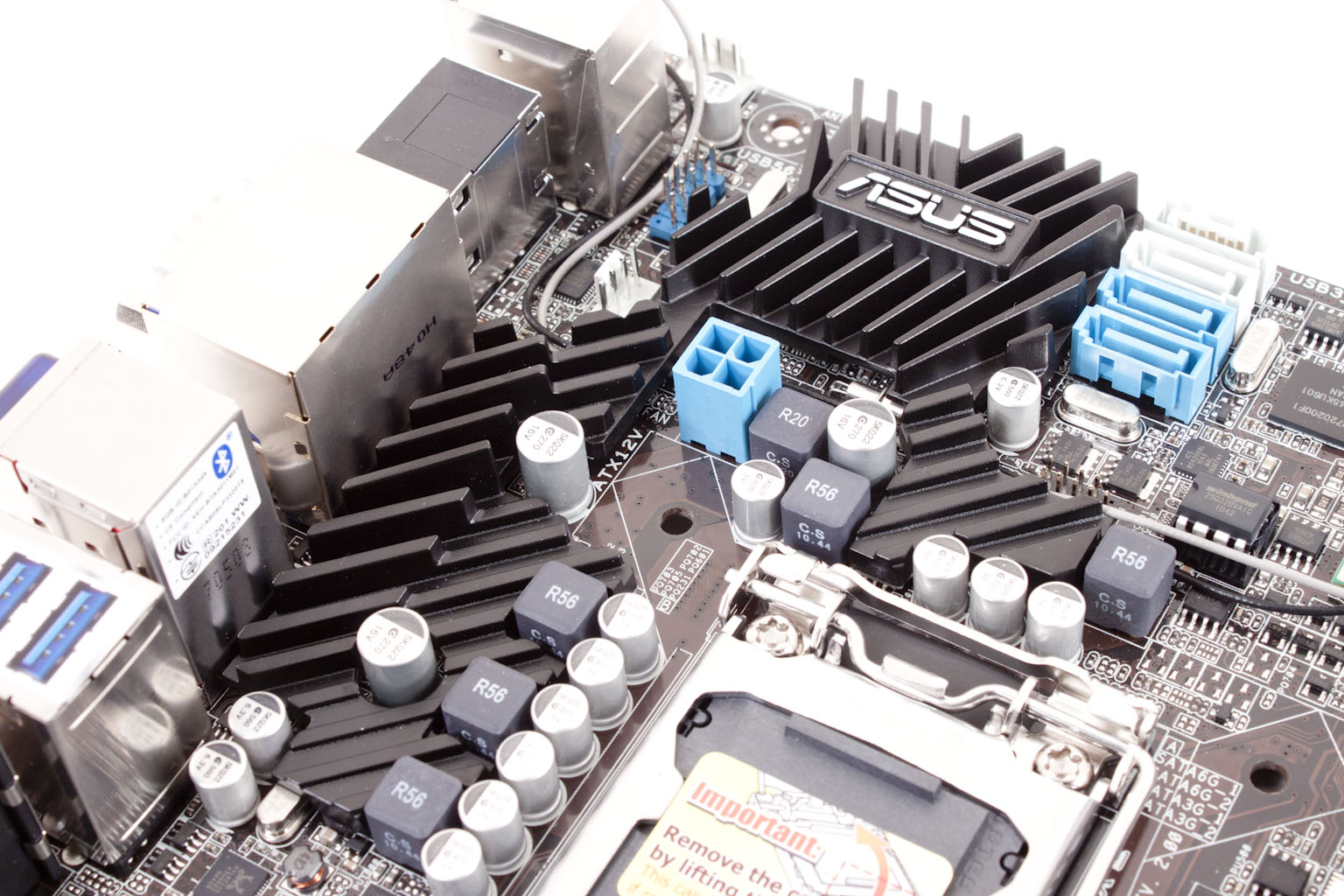 |
One thing that is different at this level is the lack of an Intel LAN chip. For the MiniMax series it seems that Asus has opted for a Realtek RTL8111E and a Realtek Wireless controller as well. These should be more than enough, although the Intel LAN controllers are much better performers. Moving around to the back and looking at the I/O ports we find what is a fairly typical layout with a few nice exceptions. Above the two red USB 2.0 ports is a blue plastic tab (for lack of a better word). This tab covers the Asus BT Go transceiver. Adding Bluetooth 2.1 to the board is a nice touch and will allow the use of longer range wireless devices (if you can find them). On the other end we see the dual antenna connectors for the n Spec wireless adapter. By using two connectors you can increase the speed of your connection and improve data throughput. By not forcing the normal antenna on you Asus is allowing you to put the case that holds the P8H67-I Deluxe out of the way and still setup your wireless antennas for optimal reception.
 |
 |
Before we move on to features I want to flip the board over and take a look at the back side. On many Mini-ITX boards the lack of space causes manufacturers to place needed components on the back. This can have an adverse effect on the type of cooler you can use. If there is a voltage regulator in the way you will not be able to put the right mount in place. On the P8H67-I Deluxe we do not see much that would be a cause for major concern except for one spot. Near one of the mounting holes there are a few components that are very close. These could interfere with a bracket as could the line of resistors along the socket mount. We will see if we run into any issues in the second half of our review.
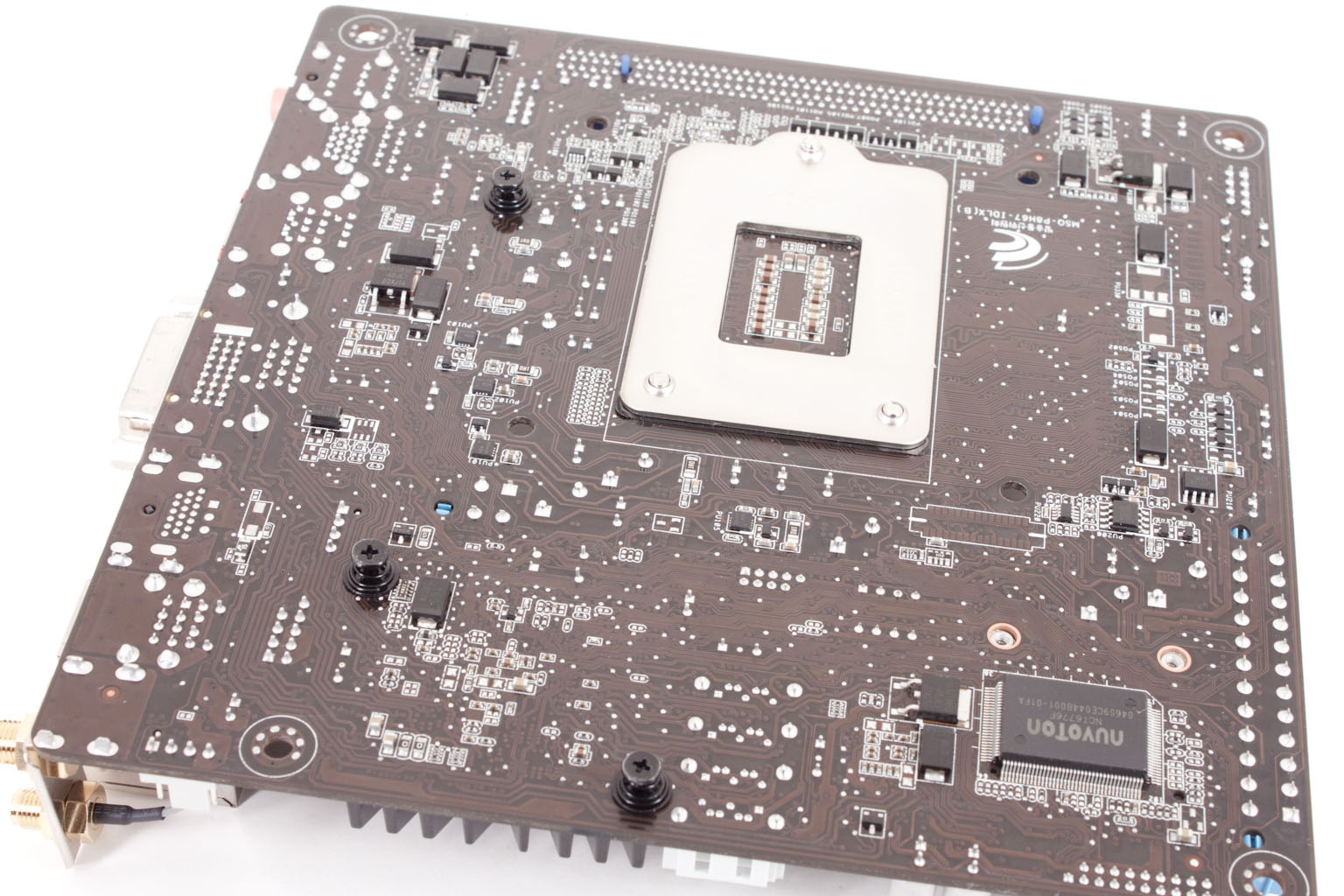 |
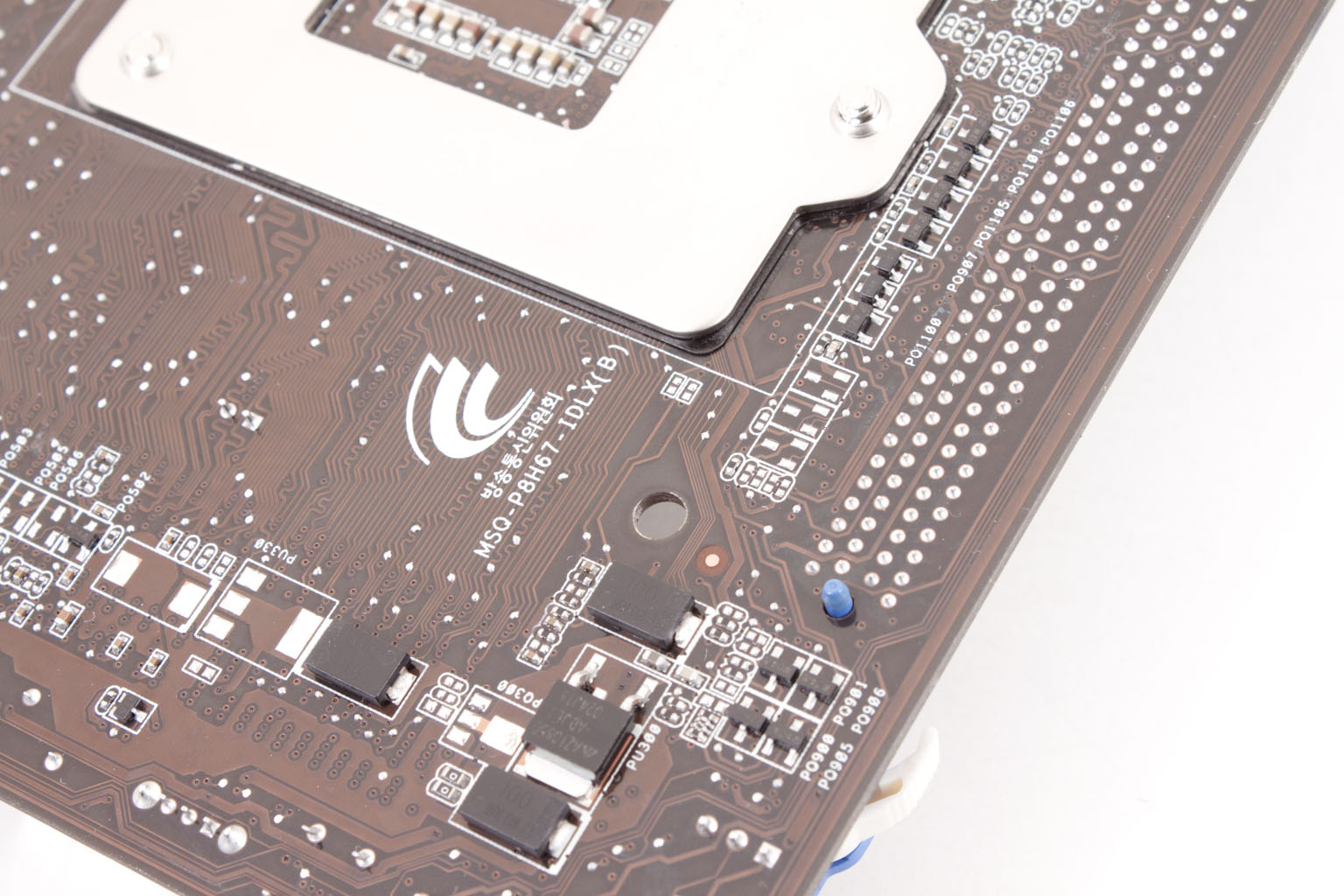 |
Features -
In the current market motherboard (and indeed almost all component) performance is very close. The days of a large performance advantage between boards using the same chipset are long gone. That is unless someone makes a HUGE mistake (like runs traces completely wrong). Now, the thing that differentiates different products is the features. These are things like power management, extra slots, better audio CODECs etc. It is these items that R&D teams work so hard to drop into what are really identical pieces of hardware at their most basic level.
Excellent -
MIMO Wireless antenna for the built-in wireless
Full USB 3.0 Header
GPU LevelUp
GPU Boost
BT Go (Bluetooth)
Good board level cooling (for the small size)
The feature set on the P8H67-I Deluxe is somewhat light, but it still has some good highlights. I like the fact that despite the Mini-ITX form factor Asus did not skimp on the performance side of things. They are also addressing the weakest link in the equation with both a GPU Boost and their GPU LevelUP technology. This means that despite the lower performing GMA GPU in the Sandy Bridge CPUs you can still push them to get a little more if needed.
In the middle (sort of good) -
Mini-ITX form factor
MemOK!
SO-DIMMS for smaller foot print and voltage
Realteh 892 audio (with Blu-ray audio layer content protection)
The size of the board is something of a feature all on its own. By shrinking the board but using the solid H67 chipset Asus is giving you the option of building a pretty good system in a small package. We know this from our tinkering around with the Mini-ITX H55 boards. You can do quite a lot with the right parts and one of these boards. The use of SO-DIMMs is also nice (although it will add cost to your build). These usually draw less power and are not as tall as the typical DIMM which makes the board easier to work with.
Floor Mats -
Single PCIe x16 slot
SATA 3.0
These last two items are simply expected these days. Even on the Atom and AMD E350 based boards you get a single PCIe slot and for the most part SATA 3.0.
Conclusion Part I -
As I said at the beginning of this part of the review the Mini-ITX form factor is back. Via kicked it off a few years ago and Intel helped to resurrect it with the Atom CPU. From there the manufacturers saw the potential and have built upon it. Asus has developed and entire line up around this form factor which includes everything from the Atom through to both Intel and AMD desktop chipsets. We like what we are seeing so far with the way the P8H67-I Deluxe is designed and the way it is laid out. The tracing appears to have been very well done and the components chosen with the market and application in mind. We are looking forward to dropping in our Core i7 2600k to see what this board will do under stress. If our first indicators are accurate it will perform quite well indeed.
Dsicuss this in our forum
